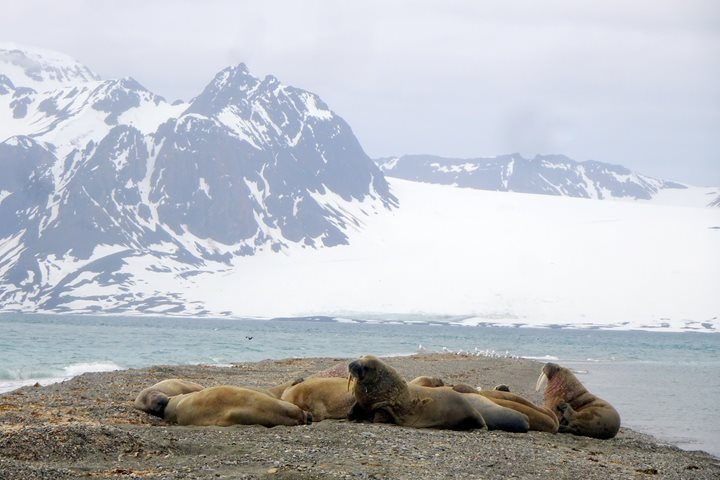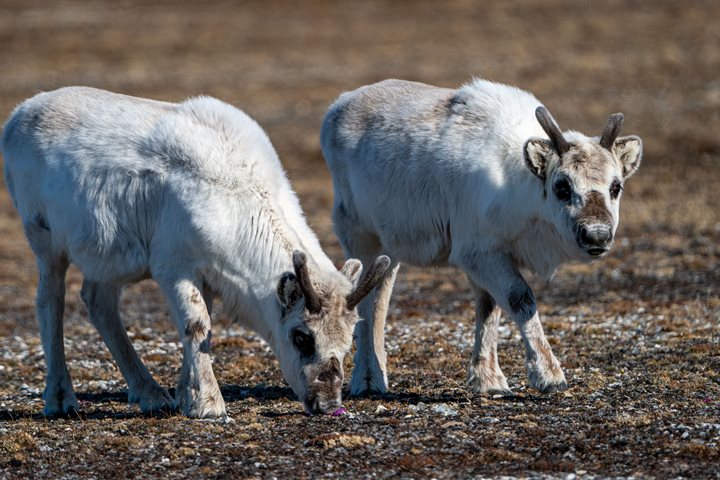Through the night, after re-entering Storfjord through Haleysundet between Spitsbergen and Barentsøya, we made our way for a planned morning outing at Årdalssnuten at the southwestern side on Edgeøya. Expedition leader Bud Lehnhausen’s wakeup call softly came through as the ship approached the shoreline and several whitish creatures were spotted, reindeers, but at the very tip of the peninsula a more yellowish fury ‘thing’ was sighted by one of our keen and sharp-eyed Norwegian guests. A hungry ‘land bear!’ Plans are plans and reality – something else.
Well, landing people ashore at the same time as a polar bear is in the same area is not going to happen. New plans had to be made and going west for the eastern side of Spitsbergen became our option.
Throughout the morning we steamed west over Storfjord with several presentations, including ‘Climate Change in the Arctic’ by our global perspective speaker Andrew Clark who has dedicated his professional career to working in both polar regions. Right before lunch we arrived to a new potential landing, which Lindblad Expeditions never made before, at Kvalvågen on the western side of Storfjord. Peaked mountains behind the shoreline looked as a temptation for our long hikers and strolling along the beach front for the less vigorously just to explore and discover.
Some of our staff team went ashore during lunch to scout out the area, as it was new for everyone. Soon after lunch, still some wind but with sparkling sunshine we all went ashore.
The long hikers rapidly under Norwegian-New Zealand leadership took off and headed over snow fields with the aim to reach one of the peaks. It was steep and with some ‘huffing and puffing’ the climax was the beauty of the view from the top, overlooking the scenery with snow covered peaks and the glacier further into the bay. A snowman was made to commemorate the climb!
The medium and short hikers strolled from the landing site towards the cape. Here two old trapper cabins were found. Additionally also plenty of birdlife was recorded and the bird list became long: arctic terns, king and common eiders, purple sandpipers showing their display of being wounded to distract anyone from their nest. A red-throated loon had its nest in one of the ponds and a glaucous gull was posted beside with high hopes to maybe get eggs. Also a den of arctic fox was found along the cliffs toward the beach. Piles of bird wings are strong evidence that birds are the main food source for the fox. In fact, here at Svalbard no rodents or lemmings are found and any fox has to survive on birds during summer.
As we reached back to the landing site, our hotel manager Patrik and our bartender had set up a much appreciated hot chocolate station, before everyone was returning to the ship. Soon we were steaming further south in Storfjord and some rollers arriving from the southeast did hint that we are in fact in Barents Sea. During recap our team of ‘Young Explorers’ made their first musical entry lead by the teachers, ‘Ballad of a Reindeer.” As soon as we rounded the southern tip of Spitsbergen, Sørkap, we got in the lee for the swell. The night, maybe not the right term to use with 24 hours daylight, was clear blue sky and the impressive icy landscape on our starboard side.







